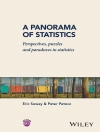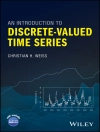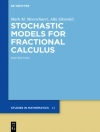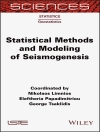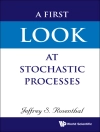The authoritative contributions gathered in this volume reflect the state of the art in compositional data analysis (Co Da). The respective chapters cover all aspects of Co Da, ranging from mathematical theory, statistical methods and techniques to its broad range of applications in geochemistry, the life sciences and other disciplines. The selected and peer-reviewed papers were originally presented at the 6th International Workshop on Compositional Data Analysis, Co Da Work 2015, held in L’Escala (Girona), Spain.
Compositional data is defined as vectors of positive components and constant sum, and, more generally, all those vectors representing parts of a whole which only carry relative information. Examples of compositional data can be found in many different fields such as geology, chemistry, economics, medicine, ecology and sociology. As most of the classical statistical techniques are incoherent on compositions, in the 1980s John Aitchison proposed the log-ratio approachto Co Da. This became the foundation of modern Co Da, which is now based on a specific geometric structure for the simplex, an appropriate representation of the sample space of compositional data.
The International Workshops on Compositional Data Analysis offer a vital discussion forum for researchers and practitioners concerned with the statistical treatment and modelling of compositional data or other constrained data sets and the interpretation of models and their applications. The goal of the workshops is to summarize and share recent developments, and to identify important lines of future research.
Inhoudsopgave
Compositional Analysis of Species Composition – Pawlowsky-Glahn, Monreal-Pawlowsky, Egozcue.- Optimising Archaeologic Ceramics h-XRF Analyses – Bergman, Lindahl.- Relationship Between Popularity of Key Words on the Google Browser and the Evolution of Worldwide Financial Indexes – Ortells, Egozcue, Ortego, Garola.- Advances in Integrating Isotopic Data with Compositional Data Analysis: Applications for Deep Formation Brine Chemistry – Blondes, Engle, Geboy.- Space-time Compositional fields: An Introduction to Simplicial Partial Differential Operators – Jarauta-Bragulat, Egozcue.- A Compositional Approach to Allele Sharing Analysis – Galvan, Graffelman.- An Application of the Isometric Log-ratio Transformation in Relatedness Research.- Graffelman, Galvan.- Diagnostic Tools and Model Selection in Scaled-Dirichlet Regression – Monti, Mateu-Figueras, Pawlowsky-Glahn, Egozcue.- Toward the Concept of Background/Baseline Compositions: A Practicable Path? – Buccianti, Nisi, Raco.- Multi Element Geochemical Modelling for Mine Planning: Case Studies from Epithermal Gold Deposits – Caciagli, Warman.- Recognizing and Validating Structural Processes in Geochemical Data – Grunsky, Kjarsgaard.
Over de auteur
Josep Antoni Martín-Fernández holds a degree in Mathematics. He received his Ph D from the Polytechnic University of Catalonia, where he worked on measurements of difference and the non-parametric classification of compositional data. He is currently a Professor at the Department of Computer Science, Applied Mathematics and Statistics of the University of Girona, Spain. His interests primarily lie in the statistical analysis of compositional data, where he focuses on cluster analysis, rounded zeros and missing data.
Santiago Thió-Henestrosa holds a Ph D in Computer Science from the Polytechnic University of Catalonia. He is a Professor at the Department of Computer Science, Applied Mathematics and Statistics of the University of Girona, Spain. He organized the first Compositional Data Analysis Workshop in 2003 and is the author of Co Da Pack, currently the only user-friendly software available for Compositional Data Analysis.







